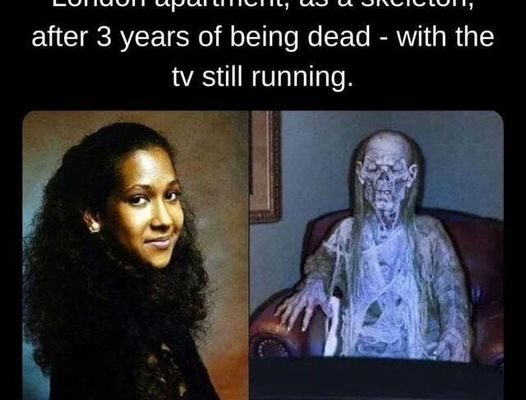Joyce Vincent: Echoes of Silence

According to All That’s Interesting, officials from the Metropolitan Housing Trust were met with an unsettling scene. Joyce Vincent, now reduced to a skeletal state and alone in her home, was found lying on the floor, clutching a shopping bag. Positioned facing her television, it was evident that she had spent her last days in solitude.
Filmmaker Carol Morley delved into Vincent’s life and death in her documentary Dreams of a Life, uncovering layers of mystery and complexity. Once vibrant and sociable, Vincent had gradually receded into a life distanced from family and friends. Within her home, she carried the unseen marks of isolation, haunted by a painful past. When former friends were questioned, they noted that she likely experienced at least one abusive relationship, and her increasing withdrawal and isolation may have been connected to it.
Surrounded by the city’s constant motion, Sky City became a refuge for Joyce. Her home, rising from neglect, stood as a quiet testament to the silent battles of those within. Though Vincent may have found some solace here, her isolation ultimately took a steady toll on her life.

Reflections on Urban Isolation
Confronting the unsettling story of Joyce Vincent’s death, we are forced to recognize some harsh truths about our society: how easily one can be forgotten, how quickly someone can vanish, and the question of what, if anything, is left behind. In an era defined by “instant communication” and digital traces, the worth of human connection and community becomes undeniable. Vincent’s tragic narrative reminds us how crucial it is to reach out to those who may be “starting to live in shadow” – to offer a helping hand to those adrift in a world of indifference.
Rather than mourning Joyce’s passing in silence, let us honor her memory by building a culture rooted in empathy and compassion within our communities. May her story stand as a “beacon of hope” toward a brighter, more inclusive future for anyone who feels isolated or alone.



